C.L.R. Peterson's Blog, page 2
March 8, 2023
Great Historical Novels of the American West
As we in the northern hemisphere hope for signs of new life and spring, I’ve discovered a new (to me) author—Sandra Dallas, who has written more than a dozen historical novels set in the American West, focused on common people often ignored by historians. I’ll share my reflections on two of her novels:
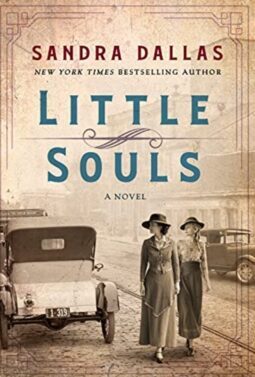 Little Souls
—latest novel of Sandra Dallas, set in Denver around 1918.
Little Souls
—latest novel of Sandra Dallas, set in Denver around 1918.Why does the world need another novel about the 1918 Influenza Epidemic?
Author Sandra Dallas creates a multifaceted plot. The epidemic is only one of several intriguing elements.
Others include:
The drama and impact of the U.S. entry into World War IEthical challenges young men face in deciding whether to enlistLife in Denver in this era, particularly for young single womenDenver’s underworld of bootlegging, gambling, kidnapping, and violence directed toward childrenCharacters: range from dregs of society to saintlyLutie (Lucretia) Hite – protagonist, she’s an aspiring artist who designs ads for women’s clothing storePeter Howell – Lutie’s fiancé, a seminary student from an affluent familyAnne Howell – Peter’s mother, a wealthy woman with a surprising pastHelen Hite – Lutie’s sister, a nurse who faces daily the pandemic’s horrorsGil Rushton – Helen’s fiancé, a young physicianDorothy – young girl orphaned by the pandemic, she faces multiple difficulties no child should encounterRonald Streeter – Dorothy’s father, involved in nefarious crime networkGus Vincent – criminal associate of Mr. StreeterBeulah Vincent – wife of Gus, she’s Ronald Streeter’s sister, also involved in criminal activitiesStrengths:Sympathetic, unique charactersSetting details that draw in readersWell-written, engaging plotWeakness:The conclusion may wrap up the story a bit too neatly. (If you read this novel, let me know what you think!)
Content review:This novel includes references to violent crime and sexual violence.
I recommend Little Soulsto readers who enjoy plunging into a new era and place, and who can tolerate the wounding of sympathetic characters.
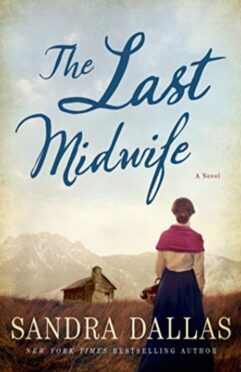 The Last Midwife
, set in 1880 in rural Colorado.
The Last Midwife
, set in 1880 in rural Colorado.Could a woman who has devoted her life to birthing babies murder an infant?
What would motivate her to commit such a crime?
In 1880, Gracy Brookens, the trusted longtime midwife of her Colorado mining town, faces a charge of murdering a struggling newborn after the town’s most prominent citizen calls her to save the baby.
Characters:The Last Midwife tells Gracy’s story, which turns out to be a tangled web involving many people, both in and beyond the town. The mine’s owner, the sheriff, Gracy’s husband and son, and the other characters—each has secrets that, if revealed, would taint his or her reputation.
From the outset, the author portrays Gracy in a sympathetic light:
She’s a woman willing to endure exhaustion and low pay for the joy of birthing babiesShe possesses a backwoods wisdom gained from her mentor and life experience instead of booksShe’s aware of her own shortcomings as well as those of others, and she’s willing to forgive.Readers’ concern for Gracy will keep them hooked, even as they fear for her fate.
Strengths:Characters are distinct and strongSetting is a character of its ownPlot makes the story difficult to put downWeakness:I challenge readers to point out a weakness; I couldn’t pinpoint any.
Content review:This novel shows the brutality and immorality of frontier life.
I recommend The Last Midwifeto readers who enjoy a novel set deep within frontier culture, with flawed but endearing characters, and twists that will make your mind spin.
Reader, do you have a favorite novel of the American West?
The post Great Historical Novels of the American West appeared first on C.L.R. Peterson, Author.
February 8, 2023
A Surprising Journey to Oregon’s Past
Can you imagine a captivating novel that involves pioneers migrating to the Oregon territory, Native Americans, and freed Blacks, with friendships bridging all three groups? Rarely does a novel touch on so many topics and weave them in such an interesting way as author Jane Kirkpatrick does in A Light in the Wilderness.
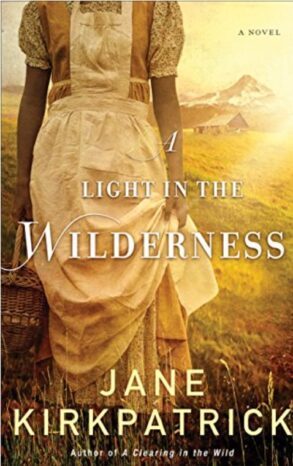
Letitia Carson (Tish), a little-known woman who has toiled for decades as a slave, receives her freedom after Mr. Bowman, her enslaver, dies. In spite of her new status and papers, she seeks a freer life than she can find in Missouri.
Tish learns about the Oregon Territory’s brutal exclusion and lash laws intended to keep Blacks out, but she migrates there after Davey Carson, her common-law husband and an Irish immigrant, promises he will protect her, and that the laws will change.
The author’s rich story fills in gaps between facts gleaned from historical and genealogical records. She brings readers along on Letitia’s action-packed inner and outward journeys, facing bigotry and challenges from nature and humans, as well as finding unexpected joys and friendships.
Major Characters:Letitia Carson – the protagonist, she’s an intelligent and persistent formerly enslaved young Black woman whose life choices are still quite limited. She took admirable risks.
Davey Carson – a crusty Irish immigrant who befriends Letitia and eventually proposes marriage. Due to existing laws, they can’t legally marry. His heroic moments counterbalance his failings.
Nancy Hawkins – Letitia’s closest friend during the Oregon Trail migration. Like Letitia, she endures suffering during the migration.
The Woman, Betsy – a Native American of the Kalapuya people in the Oregon Territory, she befriended Letitia.
Greenberry Smith – a despicable neighborof the Carsons when they reached Oregon, he had been a slave patroller before migrating. He didn’t leave his views behind.
Sarah Bowman – Letitia’s neighbor in Oregon, she struggles to treat her former slave as an equal.
Strengths:A Light in the Wilderness has an entertaining plot with memorable characters and authentic setting details; it’s also very informative about the era.
Weakness:The ending left me curious about how the remainder of Letitia’s life played out. I’d like to read that in the form of a story, too.
Content review:This novel contains a few descriptions of physical intimacy and violence.
I recommend A Light in the Wilderness to readers who enjoy an inspirational story of adventure with complex characters and deep roots in its historical background.
Reader, what novels of America’s past have inspired you?
The post A Surprising Journey to Oregon’s Past appeared first on C.L.R. Peterson, Author.
January 8, 2023
Seen Through a Servant’s Eyes
Happy New Year!
Why would Emily Dickinson entrust her literary legacy to her poorly-educated Irish maid, Margaret Maher?
This month we discuss Emily’s House, a recent novel about Margaret Maher, an Irish maid in the Dickinson home, and her relationship with Emily.
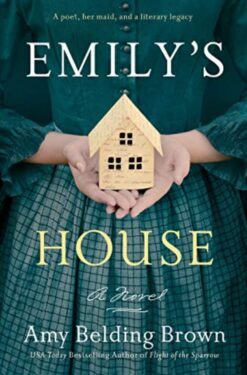
Margaret saved Emily’s writings for posterity.
Without Margaret’s wisdom, Dickinson’s poetry would have turned to ashes in the kitchen fire at the Dickinson home.
Why should you read this novel instead of a biography of Emily Dickinson or her maid, Margaret Maher?
In Emily’s House, readers see through Margaret’s eyes the ethnic prejudice she faces as well as how her relationship with Emily and the Dickinson family develops.The author, Amy Belding Brown, relies on the reminiscences of Emily’s niece, Martha Dickinson Bianchi. These documents show the close relationship Emily has with her sister-in-law, Sue. Most older biographers based their books on the better-known but less accurate papers of Mabel Loomis Todd, Emily’s brother’s mistress.Margaret, the outspoken, temperamental young Irish maid, and Emily Dickinson, the blueblood, shrinking violet seem unlikely friends, but Emily’s House reveals not only their vastly different backgrounds and perspectives on life, but also how their friendship transcended these differences.
This novel is set in two time periods:
1869 (when Margaret started working as a maid at the Homestead, the Dickinson home in Amherst,)1916 (when the property is sold)Emily’s father coerces Margaret into working as a maid at the Dickinson home. The family treats her as inferior because of her Irish heritage. Over the years, she earns Emily’s trust, ultimately becoming a friend as well as a servant to Emily. Margaret makes a promise to Emily that will break her heart to keep.
Major Characters:Margaret Maher– the protagonist, a temperamental Irish maid who serves the Dickinson family
Emily – the shrinking violet poet coddled by her father
Vinnie – Emily’s devoted younger sister
Patrick – Margaret’s love interest, a wanderer and ardent Irish patriot
Sue Dickinson – wife of Emily’s brother, Austin, and close friend of Emily
Mattie D (Madame Bianchi) – Sue’s daughter, Emily’s beloved niece
Mabel Loomis Todd – villain of this story, the mistress of Emily’s brother, Austin
My sympathy for Margaret develops as the Dickinson family exploits and discriminates against her.
Patrick, on the other hand, may have had a good heart, but his character lacked adequate honesty and loyalty to qualify as an appropriate match for Margaret.
Emily may have been a literary genius, but her character didn’t have the chance to develop fully because her family, especially her father, coddled and over-protected her.
Strength:Margaret’s position as the protagonist enables readers to see Emily’s world through the eyes of a poor Irish immigrant, as well as giving a sense of the privileged lives of the Dickinson family.
Weakness:The author’s portrayal of Emily’s sister, Vinnie, struck me as a bit unrealistic, with little of the jealousy and conflict common between sisters.
Content review:Despite their Puritan heritage, Emily and her family members exhibit moral failings, including ethnic prejudice and sexual immorality. These vices appear in Emily’s House, making the novel unsuitable for some readers.
I recommend Emily’s House to readers who enjoy a good story with a few surprising plot twists, enriched both by its portrayal of Margaret’s experience as an Irish immigrant (which gave me a better understanding of what some of my ancestors faced) and by its insights into Emily and the Dickinson family.
Reader, can you recommend a favorite novel about immigrants?
The post Seen Through a Servant’s Eyes appeared first on C.L.R. Peterson, Author.
December 8, 2022
Season’s Greetings–A Story of Hope after Tragedy
I hope you’ll find good cheer in this season! As my contribution, I’m reviewing a recent novel, The Last Bookshop in London, an inspiring story of the power of books, courage, friendship, and hope as London endures the Blitz during World War II.
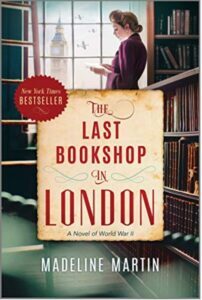
London, 1939. Grace, a young woman from a small town in Norfolk, arrives in the big city, desperate for a job. She lands a temporary position at a run-down bookstore, but she’s not a reader and has little interest in books. Then the Blitz, Germany’s effort to bomb England into submission, begins. Britons’ responses often put them in conflict with each other, even as people needed to unite to survive this dire threat to their nation’s existence.
How much of this story is based on facts vs. fiction?
Author Madeline Martin answers this question in a blog post:
“Aside from the characters and Primrose Hill Books itself, everything is as true to history as was possible for me to make it. Even the location of the bombings and when they occurred (with one exception) are exactly how they were recorded in history.”
How did the author come to understand her characters’ world?
She used the following sources:
BooksPersonal eyewitness accountsPhotos taken before, during, and after the warVideos and sound bitesCharacters: (a few of the many)
Grace, the protagonist – young and naïve at the start, the story’s events force her to make choices that help her matureMr. Evans – owner of Primrose Hill Books, his depression adds to Grace’s doubts about working at the bookstoreMrs. Weatherford – Grace’s host in London, a support to Grace. In the face of tragedy, she must find new strength and purpose.George Anderson – Grace’s love interest, he’s a lover of books who joins up to fight the Germans.Mr. Stokes – an Air Raid Precautions warden partnered with Grace to monitor blackout compliance during the Blitz. His attitude and beliefs challenge Grace.Jimmy – orphan who hesitates to trust anyone after his parents are killed in the Blitz.Strengths: The well-crafted plot, telling details, and sympathetic characters combine to create a page-turner that’s both entertaining and educational.
Weakness: Happy endings for the surviving characters leave readers on a positive note, but they seemed a bit unrealistic after the tragedies of World War II and the Blitz.
Content review: Descriptions of death and injuries, but no profanity or physical intimacy.
I recommend The Last Bookshop in London. This novel’s time setting could have made it depressing. Instead, Madeline Martin skillfully weaves a plot that doesn’t avoid the terror and death of this harrowing time, but ends in personal transformation and national unity.
Reader, what novels inspire you?
The post Season’s Greetings–A Story of Hope after Tragedy appeared first on C.L.R. Peterson, Author.
November 8, 2022
When You Think of Scotland…
When you hear the word Scotland, what comes to mind?
Kilts, bagpipes, Braveheart, Robert the Bruce, William Wallace, or Bonnie Prince Charlie?
This month, we go deeper, featuring two novels with roots in Scotland:
My review of Turn of the Tide, an award-winning novel by Margaret SkeaA new novel, The Apostates, by V.E.H. Masters, third in the Seton trilogy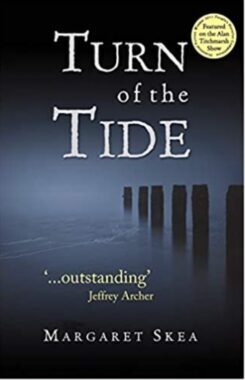 My Review:
My Review:Turn of the Tide focuses on one of Scotland’s historic feuds, the violent conflicts in the Ayrshire region between the Cunninghame and Montgomerie clans. The author follows the journey of Munro, a minor estate-owner with ties to the Cunninghame clan, as he negotiates relationships between the two clans during the 16th century.
Although the vividly-portrayed setting stands as a major character, Munro’s maturing as a character plays the key role in the novel. Throughout the story, events draw him toward one clan and then the other. The stakes increase with each choice, and the suspense builds to a riveting climax.
Characters: (just a few of the many)Munro – the protagonist, he’s torn between his ties to the Cunninghame clan, his wife’s judgments, and his own instinctsKate – Munro’s wife, a woman with good instinctsArchie – Munro’s younger brother, he struggles to find his place in lifeSybilla Boyd – friend to Munro’s familyKing James VI of Scotland – young king who tries to reconcile feuding clans and use them to his advantageEarl of Glencairn – head of Cunninghame clan, he tries to raise his clan’s standing with the kingWilliam, Master of Glencairn – his position as the Earl’s eldest son and heir allows him to get away with poor judgment and behaviorHugh, Master of Braidstane – son of a Montgomerie estate-ownerAlexander Montgomerie – a poet and courtier to King James VI, he helps Hugh and the Montgomerie clan ascend in the king’s esteemStrengths:The author’s broad, descriptive sweep covers much territory: family backgrounds and conflicts, locations, festivities, and customs. Her detailed portrait immerses readers in this era. Strong, distinctive characters drive the surprise-filled plot.
Weaknesses:Many characters people this story, some referred to by their titles or residences, creating possible difficulties for the reader in remembering who’s who. (A list of Main Characters before the story begins is helpful.) The Scottish vocabulary words can be challenging at times to understand from the context. A glossary is located at the end of the ebook, if readers are willing to interrupt their reading to find it.
Content review:This novel doesn’t shy away from the rough side of life in this era, including violence (toward women, enemies, other clans)
I recommend Turn of the Tide to readers who aren’t bothered by violence and enjoy a compelling plot set in an unfamiliar time and place, filled with both action and introspection.
Announcing: The Apostates, by V.E.H. Masters, 3rd volume in the Seton trilogy (1st volume, The Castilians, was reviewed here in February, 2022)
It’s 1550 and Bethia has fled Antwerp, with her infant son, before the jaws of the inquisition clamp down, for the family are accused of secret judaising. She believes they’ve evaded capture but her husband, Mainard, unbeknownst to her, is caught, imprisoned and alone. Reaching Geneva, Bethia hopes for respite from a dangerous journey, but it’s a Protestant city state which tolerates no dissent – and she’s a Catholic…
My Upcoming Novel:Some of my readers have asked about its progress. I’ll pass along details as soon as I have them—soon, I hope!
Arrivederci/ until next time,
Colleen
The post When You Think of Scotland… appeared first on C.L.R. Peterson, Author.
October 8, 2022
It’s 1865: What’s a Woman to Do?
Suppose you nurtured a passion for your future and studied for years to prepare for it, only to have your father veto your choice!
What would you do?
In 1865, Vita, the teen daughter of a Massachusetts physician, dreams of following in her father’s footsteps, but he adamantly opposes her plan because of her gender.
The Physician’s Daughter, by Martha Conway, skillfully navigates this drama and the creative ways Vita pursues her ambition in an era when women have limited control over their destinies.
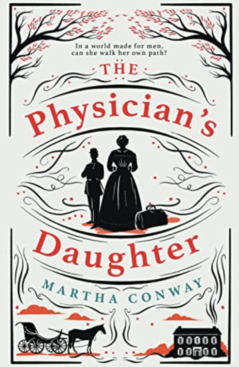
After Vita learns of women who have succeeded in becoming physicians, she devotes herself to joining their ranks.
In addition to external challenges, she confronts self-doubt as she realizes her ability to memorize medical facts is only one element in the skillset of a successful physician.
Vita must also deal with her family’s expectations that she will marry and settle into a traditional lifestyle. Her plan to marry but still pursue a career in medicine runs into problems, and the story reveals how she deals with them.
Characters:
Vita, the protagonist – elicits my sympathy for her plight and her smarts, even if her emotional intelligence develops slowly.Jacob – a damaged veteran of the Civil War, he’s an interesting blend of old-fashioned and modern ideas (for his era), which makes him a challenge for Vita to understand.Mitty – Vita’s mother, wife of Dar – I sympathized with her position in life, but I found her lacking as a support for Vita’s aspirationsDar/ Dr. Tenney – Vita’s father, an old-school physician, dubious of women’s capabilities, he’s deeply affected by his son’s death near the end of the Civil War. When Vita brings up her desire to attend medical school, he responds with, “You think you can replace your brother? You hope to profit from our loss, like a turkey vulture? No one can take the place of my son.”Freddy – Vita’s beloved brother, he dies at the end of the Civil WarAmelia – Vita’s younger sister, she’s very traditional and doesn’t support Vita’s dreams.Strengths:
The Physician’s Daughter is an engaging portrait of life and women’s struggles in the Civil War era.
Weakness:
The portrayal of Dr. Tenney, Vita’s father, showed no sympathy for Vita; even before his son’s death, he never showed humanity or love toward Vita.
Content review:
The Physician’s Daughter includes descriptions of war wounds and intimacy within marriage.
If you enjoy reading about the Civil War era and how women in bygone times have struggled to overcome discrimination, this novel will inspire and appeal to you.
Reader, what novels about women have inspired you?
The post It’s 1865: What’s a Woman to Do? appeared first on C.L.R. Peterson, Author.
September 8, 2022
Take a Break with the Austens!
When we need a break from the daily news, Jane Austen and her times provide a welcome respite. Her novels are well known by many, but Jane tried to keep her own life private. Miss Austen, a recent novel by Gill Hornby, provides insights into Jane’s life through that of her younger sister, Cassandra, and their family.
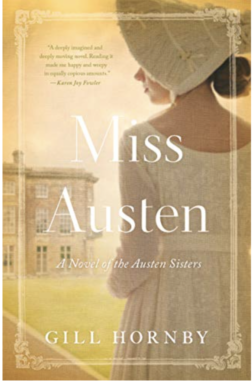
Cassandra (henceforth referred to as Cassy) is the main focus of this novel. Because she and Jane stayed close throughout their lives, their stories intertwine throughout this novel.
Readers familiar with the Austen family will dive effortlessly into this novel, while those of us less conversant must allow time to learn or refresh our memories about the family members and their personalities.
Long before I finished reading Miss Austen, the story attracted and held my interest. Because I didn’t know much about the Austen family, I found the plot twists suspenseful. The author reveals much about Jane’s and Cassy’s lives and emotions through Jane’s letters (imagined by the author). The constraints the female characters faced saddened me, but I enjoyed watching these women develop, interact, and change over time.
Major Characters:
Strengths:
In addition to an engaging plot, Miss Austen offers an in-depth look into the Austen family, the distinctive personality traits of each member, and their family dynamics.
Weakness:
I’d appreciate more clarity about how many of the characters were historical and how accurately they were portrayed. Mrs. Cassandra Austen and Mary seemed almost caricatures, with few redeeming features shining through.
Content review: clean, with no violence; perhaps most interesting to readers of young adult age or older.
My take:
I recommend Miss Austen to readers interested in learning more about Jane Austen through the eyes of her sister and interactions with her family members. If you also enjoy a story that slowly develops characters and their relationships, this is the novel for you.
Reader, what’s the most surprising thing you know about the Austen family?
The post Take a Break with the Austens! appeared first on C.L.R. Peterson, Author.
August 8, 2022
Through the Eyes of Ukrainian villagers 🌻
Where does Ukraine find such courage and toughness to stand up for months against Russia’s invasion?
I’m no expert on Ukraine, but we can understand a nation’s current behavior better by learning about its past through the eyes (and words) of people who lived through that time.
The Memory Keeper of Kyiv, a recent novel by Erin Litteken, offers a compelling fictionalized story of a Ukrainian family, offering a window on the dealings of Stalin’s Soviet Union (Russia’s name then) with Ukraine in the 20th century (certainly an influence on the events of 2022).

This time-split novel begins in two times and places:
Wisconsin, 2004: Cassie, a Ukrainian-American, and her young daughter, Birdie, move in with Cassie’s Ukrainian grandmother, Bobby, after Cassie’s husband dies suddenly. Cassie struggles to understand her grandmother’s peculiarities, even as she grieves her husband’s death and faces the challenge of a possible new relationship.Ukraine, 1929: Dictator Joseph Stalin begins to create collective farms and control agriculture in the Soviet Union by eliminating kulaks (prosperous peasants). Katya, her family and community try to maintain their lives and values as their situation grows worse by the day.Characters:
They’re developed well, each with a unique perspective, strengths, and flaws.Their interactions create an engaging story that kept me reading.I especially related to Katya, one of the protagonists, who struggled between her desire for justice and her need to stay silent to survive.Strengths:
The Memory Keeper of Kyiv, Erin Litteken’s debut novel, is a page-turner, providing a vivid portrayal of life in a fictional Ukrainian village around the time of Ukraine’s Holodomor (the Great Famine created by Stalin).
Weakness:
As the granddaughter of a Ukrainian refugee, the author understandably sympathizes with her Ukrainian characters. However, the novel would come across as more balanced if the Russian soldiers and collaborators showed more doubts about their actions, remorse, and perhaps a hint of compassion for their victims.
Content review:
This novel describes horrific cruelties inflicted by Stalin’s soldiers and local collaborators, so I suggest it to mature readers.
I recommend The Memory Keeper of Kyiv to readers who wish to understand this period in Ukraine’s history, and who aren’t put off by descriptions of violence and cruelty.
Reader, can you suggest other books about Ukraine?
The post Through the Eyes of Ukrainian villagers 🌻 appeared first on C.L.R. Peterson, Author.
July 9, 2022
Heroes in Defeat
Have you heard of (or seen the movie about) the Monuments Men, the special force of Americans and Brits assembled after Germany’s World War II defeat?
They rushed to recover artwork stolen and hidden by the Nazis. It’s a suspenseful story that has found its way into numerous novels.
The Roses Underneath, set in Wiesbaden, Germany, in August, 1945, explores a less widely-known aspect of this story: the involvement of German civilians in the effort to return stolen art to its rightful owners.
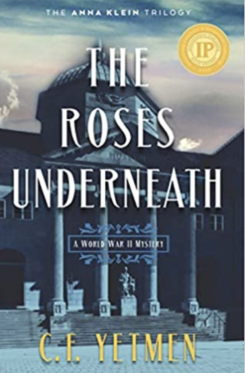
This novel, the first in the Anna Klein trilogy by C.F. Yetmen, reveals the conflicts and complications faced by Germans as they interacted with the American military that defeated the Nazis.
During World War II, Germans had been treated as traitors if they opposed the Nazis.
Now, to gain the trust of Americans (and secure employment to rescue them from destitution), German civilians need to prove their loyalty to the mission of the Monuments Men.
Characters:I appreciated this novel’s realistic portrayal of its characters, revealing both their virtues and faults. The difficult decisions they faced force readers to consider the choices they would make in such situations.
Anna Klein – the protagonist, she’s torn between love for her idealistic socialist husband and her fear of what will happen to her young daughter and herself as the Soviet Army advances
Amalia – Anna’s intelligent six-year-old daughter who would have preferred to stay with her father in Soviet-occupied Thuringia
Captain Cooper – an American architect working for the Monuments Men, he becomes Anna’s boss; his moral compass and gut feelings guide his actions, frequently causing problems in the military chain-of-command environment.
Emil Schilling – a disillusioned German soldier who lost his fingertips to frostbite in Leningrad, he returns to Germany and scrounges for employment
Frieda Schilling – Emil’s sister who provides daycare for Amalia
Oskar – orphaned German boy Anna discovers hanging around a villa; he resists Anna’s efforts to help him
Ludwig Schneider – German art dealer who tries to hide his thefts of art during the war so he can work for Monuments Men
Gerhard Heinrich (aka Schenk) – former gallery owner whose greed threatens Anna
Madeleine Wolf – best friend of Anna’s deceased mother ; she takes in Anna and Amalia after they walk to Wiesbaden
Strengths:Exciting story set in an eventful eraDives deeply into the period and the Monuments MenDistinct characters with complex motivations and storiesWeakness:Anna took chances that didn’t seem believable for a cautious woman who’d been living under Nazi rule for years.
Content review:Contains some profanity and mention of sexual exploitation during and after World War II
Bottom Line:This novel entertained me with its panoply of characters and plot twists, educated me about the plight of Germans after World War II, and challenged me to think about how I would respond in similar circumstances. I recommend it to readers who enjoy an exciting history-based story with depth of setting and characters.
In my own writing news:If you’d like to be among the first to read my latest novel, I’m looking for fans of historical fiction to join my team of beta readers and early reviewers. Please contact me here!
Reader, can you recommend books where vanquished people become heroes?
The post Heroes in Defeat appeared first on C.L.R. Peterson, Author.
June 8, 2022
The Underground Railroad—Is Freedom Worth Breaking the Law?
If you could free someone from slavery only by lying and breaking the law, would you do it?
Many American Quakers (and others) faced this choice in the 1800s (until the Emancipation Proclamation outlawed slavery in 1863)—should they help enslaved people escape to freedom via the Underground Railroad?
Quakers valued every human.
So why would they have conflicting views about participating in the Underground Railroad’s efforts to smuggle escaped slaves to freedom?
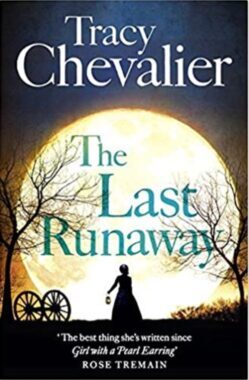
The Last Runaway, by Tracy Chevalier, provides hints as it follows the journey of Honor, a young English Quaker who accompanies her fiancéed sister to the U.S. and settles near Oberlin, Ohio (an area of Quaker settlements, including Oberlin College).
This novel, set in the antebellum era, shows the surprising turns of Honor’s life as she confronts the realities of slavery, unexpected challenges, and wrenching decisions. The Last Runaway portrays Underground Railroad participants (and their opponents) as complex, fallible individuals facing danger and difficult choices (far from depictions as one-dimensional heroes).
Women immigrants’ fraught position in this era emerges clearly in this novel. When a foreign-born woman found herself alone in the U.S., even within an established community from her original culture, she was likely to face extremely limited choices:
In the best situation, she would marry a kind, compatible manFrequently women had to marry whomever was locally availableIf marriage wasn’t an option, she could survive only by becoming a servant or prostituteCharacters:Honor Bright, the protagonist—I admired this young English Quaker who travels to America with her sister. She survives major shocks and increasingly takes agency of her life.Donovan—the villain, a slave catcher who is romantically interested in Honor. Occasionally, he shows a spark of humanity, making readers wonder if his feelings for Honor will turn him into a hero.Belle Mills—Donovan’s sister, an intelligent, free-spirited woman in many ways the opposite of her brother; she runs a millinery shop. In many ways, she’s the true heroine of the story because of the sacrifices she makes for others.Judith Haymaker—Quaker matriarch; she appears cold and heartless, until readers learn her backstory.Jack Haymaker—Judith’s young adult son; the story shows his maturing process, over time making his character more sympathetic.Mrs. Reed—formerly enslaved woman who escaped, settled in Ohio and assisted Underground Railroad; her initial wariness and evolving relationship with Honor reveal the complexity of her character, as well as how Honor matures. Her strength and hard-earned wisdom eventually made her a sympathetic character.Strengths:The Last Runaway is a poignant story of how individuals dealt with the harsh realities of their times. The specific details bring to life the setting and era.
Weakness:Given the extreme risks of participation in the Underground Railroad, the author’s portrayal of several of the Quaker characters in a negative light, relative to their sympathy for Honor or their position on helping slaves escape, seems a bit harsh.
Content review:This is a story for adults, with sexual content woven into the story.
Recommendation:The Last Runaway is a fascinating but emotionally difficult novel, forcing readers to consider how they would have navigated the few choices and stark consequences Honor found in the U.S. in the mid-1800s. I recommend this novel to readers who enjoy such a challenge.
Reader, two questions for you:Would you have risked your future or even your life to help an enslaved person escape to freedom?Have you read other novels about the Underground Railroad that you recommend?The post The Underground Railroad—Is Freedom Worth Breaking the Law? appeared first on C.L.R. Peterson, Author.



